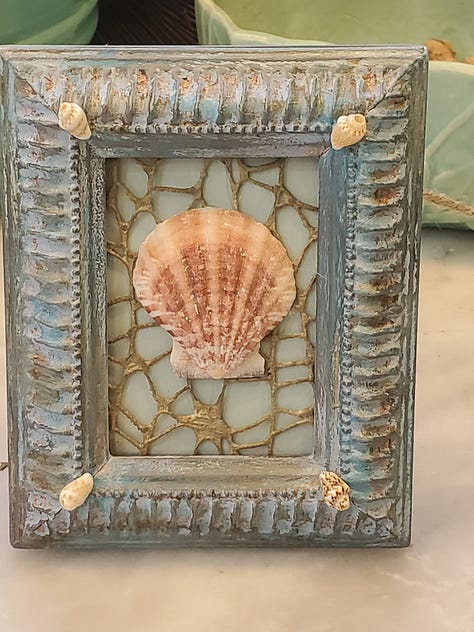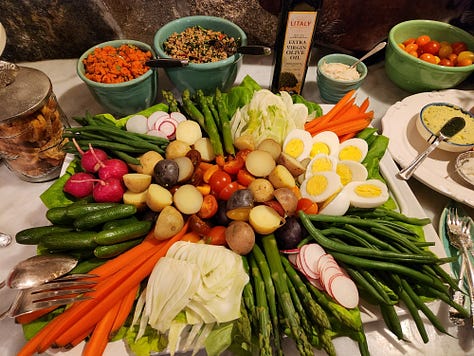The Care and Feeding of a Spiritual Writer's Monkeys
Are you trying to write regularly? Perhaps you’ve got a few monkeys on your back. Are you in need some creativity? Need a new perspective? Feed these monkeys.
Introduction
William Oncken, Jr.'s Harvard Business Review classic, “Managing Management Time: Who's Got the Monkey?” (1974) outlines ways in which business leaders care for and feed their monkeys. The metaphorical monkeys, of course, are challenges. In 1999, the Harvard Business Review asked Stephen R. Covey, author of 7 Habits of Highly Effective People, to weigh in on Oncken’s updated list of rules for dealing with the ever-annoying monkeys. The gist of the article is that monkeys eat up time and energy and should be shot or fed so managers can best use their time and talents in service of their ultimate goals.
Not unlike business leaders, writers deal with monkeys: time wasters, the inability to say no to projects that lead nowhere, writer’s block, lack of creativity, and the lack of initiative and motivation to start and finish projects. Writers, then, need to care for and feed those monkeys that contribute to the pursuit of the writing life. The following is a list of ten fun monkeys that lead naturally to nurturing a writing lifestyle. I’ve chosen to feed these monkeys as they are inspirational, creative, joyful, and tap into a spiritual element. A writing prompt or two is included with each one.
1. Get a pet
It doesn’t have to be a monkey, but a cat, dog, mouse, fish, gecko, or any living breathing thing will do. If you don’t want the commitment, spend time with a friend’s pet. A pet brings the writer closer to the Creator. When my dog runs to the door and is happy to see me, she reflects a God who is overjoyed to hear from me. What special things does (or did, if it’s a pet from your past) your pet do? Use word choice to let the reader know how your pet’s antics make you feel.



2. Plant something
A plant teaches patience. It takes time for a plant to mature. Some of my plants are over 100 years old. I think about how with the elements of soil, light, and water these plants continue to provide me with health benefits and beauty. Jesus taught many lessons from the truths of agriculture. How can you connect the process of planting to your own spiritual growth? Who has watered you?
3. Create art
The piece doesn’t have to be a perfect painting, but a pair of knitted mittens, a collage, an embroidered buttonhole on a denim shirt, a simple drawing, a paint-by-number, or a decorated cake will suffice. Creating art helps the writer appreciate the craftmanship of the Designer. What inspires you about something you’ve created with your own hands? How did you accomplish your piece?
4. Travel
Go anywhere, even local. Get out of your comfort zone. Recognizing that other people do things differently to achieve a similar outcome leads to compassion and understanding. What is satisfying (exciting, scary, frustrating) about going somewhere new? How do you prepare to visit a new place?



5. Stay at a short-term rental
Owners of airbnbs/VRBOs leave their books, decorations, photos, refrigerator magnets, and other mysteries that become the stuff of stories. Writing about the characters who might inhabit the space, even if I meet them, teaches empathy. Write about the items you observe in that particular piece of architecture that give you insight into what you think the owner is like.
6. Take a walk
For me, the best way to do this is to combine it with a dog and to try a new route. A dog stops to sniff and stare in places where the human is unaware that anything is there. Walking in the woods or on the beach connects us to the intricacies of nature and ultimately our Creator. Walking in a town or a city provides the writer with lots of sensory information—the stuff of descriptions. Use word choice and your senses to describe what you see, hear, smell, feel, and taste, to create an overall impression/feeling you take away from the walk without directly saying what that impression is.
7. Dress in a costume
You don’t have to apply for a part-time job at a car dealership and wave at passers-by, just dress up for an event. I had shalwar chemise made for me in Pakistan and wearing my bright orange baggy pants and tunic to work was an instant success. Once, at a country tavern, I danced my heart out in cowboy boots, tons of turquoise, and tattered jeans. On another occasion, I wore bell bottom jeans, a blousy top, a brown suede jacket with long fringe, and a scarf tied around my head. You are you every day, but who else are you? What personality traits do you exhibit in different types of dress?



8. Throw a party for yourself
For many years I dreaded my birthday, mostly because nothing happened. Then, I threw a party. I kept inviting people because I didn’t think anyone would come. Eighty friends showed up. God showered blessings upon me and showed me that it’s ok to celebrate the me that is fearfully and wonderfully made. Using the people who came to your party, how do they enrich your life? What do they teach you about yourself?
9. Take a train or boat
For someone else take the helm is to lose control, but in the loss is the gain of relaxation. At least for me. Amtrak’s slogan, “Leave the driving to us” is one I take to heart regularly. Without the stress of traffic, I meet people, nap, and arrive at my destination relaxed. Jesus traveled and napped on boats, so why not take a cruise? What have experiences on different modes of transportation (plane, train, bus, bicycle, car, etc.) been like for you (scary, satisfying, speedy, etc.)?
10. Collect something
I collect small inexpensive items such as shells and pebbles, cookbooks, and blue-green pottery. It’s the thrill of the hunt in and out of thrift stores, on sandy beaches, and at galleries, and when I eventually find something, that results in joy. Each piece holds a memory. Describe an item in your collection and what it means to you.
Writing Tips
This list of writing prompts can get the proverbial creative juices flowing, help with developing writing skills, and they can become the beginning of narratives that wouldn’t have been written otherwise. During periods when I need to let some pieces marinate before editing them yet again, I feed these monkeys. In The Renaissance Life with Naomi, I post stories that were developed out of some of these prompts. The one that you’ve just read is one of them.
The Prompt
The prompt from which the piece comes from is:
What are ten things to do before you die and how can you connect them to your creative writing?
In my example, the things to do in the list are connected to a writing life, but you can adjust the prompt to suit your purposes. Some examples include the following.
Places to visit before you die
Games to play before you die and how can you connect them to growing up
Food to eat before you die
Books to read before the end of summer
Movies to see before you graduate
Animals to learn about before you visit the XYZ zoo
The Benefits of List Writing
The popular style of writing a list has many benefits.
The organization is not difficult, but can be random, alphabetical, acrostic to spell out a word or phrase, or hierarchical.
A single sentence is sufficient for each section. For writing teachers of beginners, students new to the language, younger or reluctant learners, add a second sentence of explanation for why this element is important.
My example includes ten items, but the list could be lengthened or shortened depending on the stamina of the writer.
This style lends itself to collaboration whereby different writers contribute a section or two.
Because it’s not long, the lists can be read aloud if an author’s chair, or published piece is required.
Students in a writing class could choose any idea and build on it.
Expanded Assignment
The assignment is easily expanded by asking the writing student to chose one of the items and write about it. I chose to expand on #6 which resulted in The Barkers and Other Neighbors.
The assignment can also connect to other aspects of academic life. For example, it can be used as a study guide or as an exam: 10 Things to Know About…
The Cell
The US involvement in WWII
Impressionism
Conjugating Verbs
Macbeth
While I’ve written my “10 Things” out in prose form, in the examples above, each one could be written on a flash card and used for individual or group study.
If you have the opportunity to use this activity, please share your experience with me. Or, should you have any questions or other idea, feel free to reach out.






